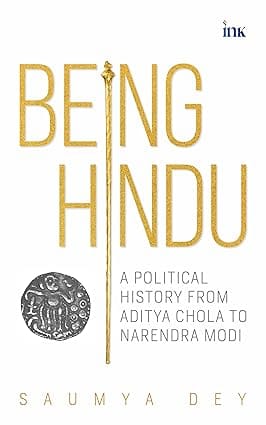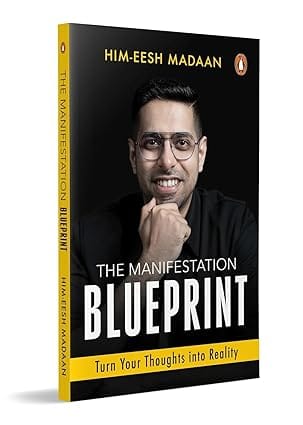WELCOME TO MIDLAND BOOK SHOP!
SHOP FOR
- Non-ficton
- Non-ficton
- Contemporary Fiction
- Contemporary Fiction
- Children
- Children
- Comics & Graphic Novels
- Comics & Graphic Novels
- Non-Fiction
- Non-Fiction
- Fiction
- Fiction
Shop No.20, Aurobindo Palace Market, Hauz Khas, Near Church +91 9818282497 | 011 26867121 110016 New Delhi IN
Midland The Book Shop ™
Shop No.20, Aurobindo Palace Market, Hauz Khas, Near Church +91 9818282497 | 011 26867121 New Delhi, IN
+919871604786 https://www.midlandbookshop.com/s/607fe93d7eafcac1f2c73ea4/69453da445ba84d539b38f9a/black-yellow-simple-bold-youtube-channel-logo-400-x-100-px-1--480x480.png" [email protected]9788197349461 66d6fff2b0d66702d6b7e687 Being Hindu A Political History From Aditya Chola To Narendra Modi https://www.midlandbookshop.com/s/607fe93d7eafcac1f2c73ea4/66d6fff3b0d66702d6b7e694/71fp-fetv4l-_sy425_.jpg 9788197349461
Being Hindu adopts a longue durée view of history and attempts to contextualize the Bharatiya Janata Party (BJP) and its progenitor, the Bharatiya Jana Sangh (BJS), as political phenomena by examining certain medieval state structures and instances of advocacy and popular mobilization in the colonial period. Further, it studies the politics of Narendra Modi and the policy initiatives undertaken by him as the prime minister of India to highlight their apparent cultural and moral underpinnings. Its eventual objective is to make a case for the historical authenticity of the Hindu mode of politics that emerged in post-Independence India. The attempt, in other words, is to demonstrate that it is a thing in its own right and not a cynical invention of hostility towards religious minorities, an irrational or ‘fascist’ mindset, or sundry anxieties, but has precedents in frameworks and practices going rather far back in history. The BJS and the BJP are thus shown to be locatable in a long tradition of Hindus organizing their political practice or politics through cultural resources and a cultural imagination distinctive to them. Narendra Modi, similarly, brings an inclusive Hindu catholicity and sangathanist outlook to his politics and developmental agenda. Being Hindu, in this way, relates a brief history of the political expressions of being Hindu over slightly more than eleven centuries— from the ascension of Aditya I, the first of the imperial Cholas, in 870 CE until our own time and age.
About the Author
Saumya Dey is a professor of history at Rishihood University, Haryana. He did his PhD at the Centre for Historical Studies, JNU, Delhi. His chief research interests are cultural and intellectual history and the politics of colonial India. His prior books are Becoming Hindus and Muslims: Reading the Cultural Encounter in Bengal, 1342–1905 (Munshiram Manoharlal, 2015), The Cultural Landscape of Hindutva and Other Essays: Historical Legitimacy of an Idea (Shubhi Publications, 2019 [Revised Edition, 2023]), Narrativizing Bharatvarsa and Other Essays (Shubhi Publications, 2021 [Revised Edition, 2022]), and The Seedbed of Pakistan: Cultural Conflicts, Elite Muslim Anxieties, and the Congress, 1885–1906 (Vitasta Publications, 2023).
in stockINR 479
1 1
Email ID already exists!
Your Current password is incorrect
Password Updated Successfully
Thanks for your Feedback
- Home
- Non-Fiction
- Being Hindu A Political History From Aditya Chola To Narendra Modi
Being Hindu A Political History From Aditya Chola To Narendra Modi
ISBN: 9788197349461
₹479
₹599 (20% OFF)SIZE GUIDE
Sold By: Hauz Khas - Aurobindo Market
Details
- ISBN: 9788197349461
- Author: Saumya Dey
- Publisher: Ink
- Pages: 224
- Format: Paperback
Book Description
Being Hindu adopts a longue durée view of history and attempts to contextualize the Bharatiya Janata Party (BJP) and its progenitor, the Bharatiya Jana Sangh (BJS), as political phenomena by examining certain medieval state structures and instances of advocacy and popular mobilization in the colonial period. Further, it studies the politics of Narendra Modi and the policy initiatives undertaken by him as the prime minister of India to highlight their apparent cultural and moral underpinnings. Its eventual objective is to make a case for the historical authenticity of the Hindu mode of politics that emerged in post-Independence India. The attempt, in other words, is to demonstrate that it is a thing in its own right and not a cynical invention of hostility towards religious minorities, an irrational or ‘fascist’ mindset, or sundry anxieties, but has precedents in frameworks and practices going rather far back in history. The BJS and the BJP are thus shown to be locatable in a long tradition of Hindus organizing their political practice or politics through cultural resources and a cultural imagination distinctive to them. Narendra Modi, similarly, brings an inclusive Hindu catholicity and sangathanist outlook to his politics and developmental agenda. Being Hindu, in this way, relates a brief history of the political expressions of being Hindu over slightly more than eleven centuries— from the ascension of Aditya I, the first of the imperial Cholas, in 870 CE until our own time and age.
About the Author
Saumya Dey is a professor of history at Rishihood University, Haryana. He did his PhD at the Centre for Historical Studies, JNU, Delhi. His chief research interests are cultural and intellectual history and the politics of colonial India. His prior books are Becoming Hindus and Muslims: Reading the Cultural Encounter in Bengal, 1342–1905 (Munshiram Manoharlal, 2015), The Cultural Landscape of Hindutva and Other Essays: Historical Legitimacy of an Idea (Shubhi Publications, 2019 [Revised Edition, 2023]), Narrativizing Bharatvarsa and Other Essays (Shubhi Publications, 2021 [Revised Edition, 2022]), and The Seedbed of Pakistan: Cultural Conflicts, Elite Muslim Anxieties, and the Congress, 1885–1906 (Vitasta Publications, 2023).
User reviews
NEWSLETTER
Subscribe to get Email Updates!
Thanks for subscribing.
Your response has been recorded.

India's Iconic & Independent Book Store offering a vast selection of books across a variety of genres Since 1978.
"We Believe In The Power of Books" Our mission is to make books accessible to everyone, and to cultivate a culture of reading and learning. We strive to provide a wide range of books, from classic literature, sci-fi and fantasy, to graphic novels, biographies and self-help books, so that everyone can find something to read.
Whether you’re looking for your next great read, a gift for someone special, or just browsing, Midland is here to make your book-buying experience easy and enjoyable.
We are shipping pan India and across the world.
For Bulk Order / Corporate Gifting
 +91 9818282497 |
+91 9818282497 |  [email protected]
[email protected]
Click To Know More
INFORMATION
QUICK LINKS
ADDRESS
Midland Book Shop - Hauz Khas
Shop No.20, Aurobindo Palace Market, Near Church, New Delhi
Shop No.20, Aurobindo Palace Market, Near Church, New Delhi














